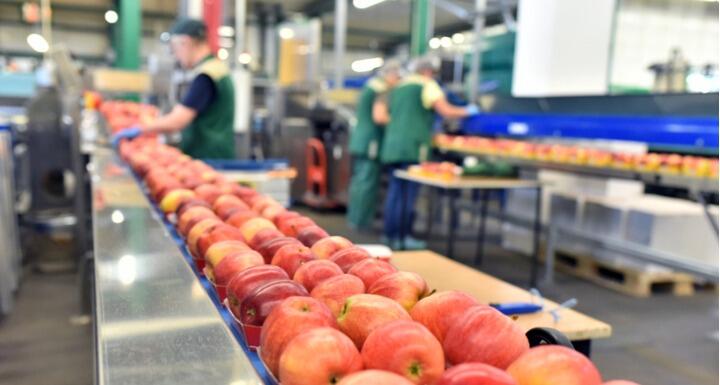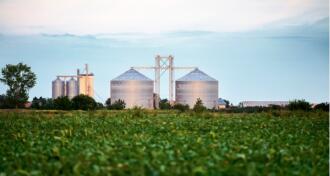In an effort to reflect recent updates provided by the Centers for Disease Control and Prevention ("CDC"), the Occupational Safety and Health Administration ("OSHA") revised its guidance on protecting workers and preventing the spread of COVID-19 in the workplace.
While aimed generally at all non-healthcare employers, OSHA's guidance also incorporates additional safety measures for agriculture and food processing industries.
OSHA's Adoption of CDC Recommendations for Fully Vaccinated People
While OSHA continues to emphasize that vaccination is the most effective way to protect against the perils of COVID-19, preliminary evidence suggests that fully vaccinated people can become infected with and spread COVID-19 and its related variants. Strengthening its previous stance, OSHA now suggests that employers consider mandating workers to get vaccinated or to wear masks, physically distance themselves from others, and undergo regular COVID-19 testing if they remain unvaccinated. Due to the Delta variant running rampant across the United States and the CDC's continued designation of various places as areas of substantial or high transmission, OSHA also adopted the CDC's updated recommendations for fully vaccinated people. Such recommendations include, among other things:
- Wearing a mask in public indoor settings in areas of substantial or high transmission;
- Choosing to wear a mask regardless of the level of transmission, particularly if individuals are at risk or have someone in their household who is at increased risk of severe disease or not fully vaccinated; and
- Getting tested 3-5 days following known exposure to someone with suspected or confirmed COVID-19 and wearing a mask in public indoor settings for 14 days after exposure or until a negative test result.
Measures for High-Risk Workplaces, Such as Agriculture and Food Processing Industries
In addition to providing general guidelines applicable to all non-healthcare employers, OSHA's revised guidance offers recommendations specific to higher-risk workplaces — which includes the agriculture and food processing industries. The guidance for the agriculture and food processing industries includes the following recommendations, in addition to the general precautions such as isolation of infected workers:
- Stagger break times in these generally high-population workplaces, or provide temporary break areas and restrooms to avoid groups of unvaccinated or otherwise at-risk workers congregating during breaks. Such workers should maintain at least 6 feet of distance from others at all times, including on breaks.
- Stagger workers' arrival and departure times to avoid congregations of unvaccinated or otherwise at-risk workers in parking areas, locker rooms, and near time clocks.
- Provide visual cues (e.g., floor markings, signs) as a reminder to maintain physical distancing.
- Require unvaccinated or otherwise at-risk workers, and also fully vaccinated workers in areas of substantial or high community transmission, to wear masks whenever possible; encourage and consider requiring customers and other visitors to do the same.
- Implement strategies (tailored to your workplace) to improve ventilation that protects workers as outlined in CDC's Ventilation in Buildings and in the OSHA Alert: COVID-19 Guidance on Ventilation in the Workplace, and American Society of Heating Refrigeration and Air-Conditioning Engineers Guidance for Building Operations and Industrial Settings During the COVID-19 Pandemic.
- Ensure adequate ventilation in the facility, or if feasible, move work outdoors.
- Space such workers out, ideally at least 6 feet apart, and ensure that such workers are not working directly across from one another. Barriers are not a replacement for worker use of face coverings and physical distancing.
- If barriers are used where physical distancing cannot be maintained, they should be made of a solid, impermeable material, like plastic or acrylic, that can be easily cleaned or replaced. Barriers should block face-to-face pathways and should not flap or otherwise move out of position when they are being used.
- Barriers do not replace the need for physical distancing — at least six feet of separation should be maintained between unvaccinated and otherwise at-risk individuals whenever possible.
Conclusion
While OSHA's guidance regarding vaccination policies, testing, and face masks are only advisory for non-healthcare employers, all employers should review their procedures aimed at mitigating the spread of COVID-19 and consider the risks of their specific industries. All private businesses and organizations will need to do their own individual assessment on whether to implement the recommendations encouraged by OSHA, and the employers operating within agriculture and food processing industries may need to consider themselves as increased risk employers during such assessments. Considering the surge of areas the CDC deems to be substantial or high transmission communities, the most prudent approach may be to evaluate current safety practices with your legal counsel and determine the appropriate measures to implement.









